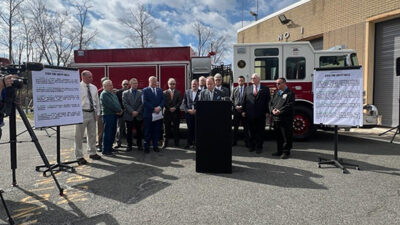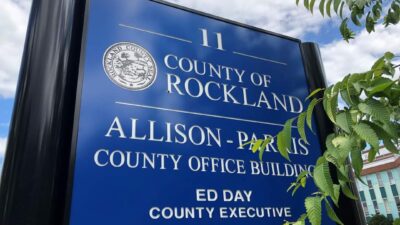Tappan Zee Tolls Clarity
Back in February, I sent a letter to Governor Andrew Cuomo expressing my growing concern regarding the continued delays in appointing a toll and finance task force to study crossing fees on the new Tappan Zee Bridge. The letter – signed by myself and Westchester County Executive Rob Astorino – has never been answered.
In the two years since the Governor called on the New York State Thruway Authority to assemble a team of local stakeholders, financial experts and transportation officials to consider toll options, the effort has seen little forward momentum. The $3.9 billion price tag to build the new crossing has been widely known for some time.
Just this week, with the arrival of “The Left Coast Lifter” off our shores, the Governor finally offered some clarity: he promised to form the toll task force next year! While I appreciate the complexities surrounding its funding, I believe the moment for a transparent discussion on toll rates – and, how those charges will impact Lower Hudson Valley residents, businesses and future economic growth – is long overdue.
For starters, higher tolls will have an outsize impact on daily commuters. During a time when salaries are barely budging and gas prices are soaring, paying more to cross the new span will take ever larger chunks from our paychecks. Even the state’s promise of variable toll pricing for regular users won’t completely ease the pain.
According to recent national study, almost thirty percent of Americans say they have changed or left a job as a result of their commute. (Rising tolls and gas prices were among the leading factors) As a result, many companies are realizing the importance of considering where their employees live and how they commute. With employers now competing for a highly talented workforce, higher bridge tolls will be contributing factors when it comes to evaluating new office locations and hiring.
There is another possible economic impact to consider which could negatively affect residents, businesses and our counties’ coffers. At least initially, property values could be affected adversely by higher tolls. If the crossing fees are viewed as a tax on transportation through the Lower Hudson Valley, this may reduce property values, holding other things constant.
A sky-high toll will also erode the County’s sales tax revenue. Folks from Westchester, New York City and even Connecticut will look to spend their hard-earned dollars at retailers and restaurants closer to home to avoid the bridge. These are essential monies the County cannot afford to lose!
The value of a business is calculated as the present value of the future stream of profits of that business. If that future stream of profits is diminished, the value of the business drops, lowering the net worth of the property and location of the business. This outcome could have a devastating effect on my administration’s efforts to grow our local economy. Additionally, higher tolls would certainly exert modest downward pressure on some home values in Rockland and Westchester counties.
If the magnitude of costly tolls is perceived to be a problem in 2014, the issue will only grow larger because the real, price-deflated cost of using the new bridge will surely increase. The only question is how much. And, now that federal authorities have rejected the Cuomo administration’s plan to use nearly half a billion dollars in clean water funds to help pay for the new span, any possibility of a reasonably-priced crossing fee would appear slim.
While the Governor’s promise of dialogue on tolls in 2015 is a positive sign, I remain disappointed that Rockland County residents have been offered little information to date on exactly how much Tappan Zee tolls will actually rise. One thing is certain: a $14 dollar New NY Bridge crossing fee, as originally suggested by a member of Governor Cuomo’s staff, is a non-starter.



